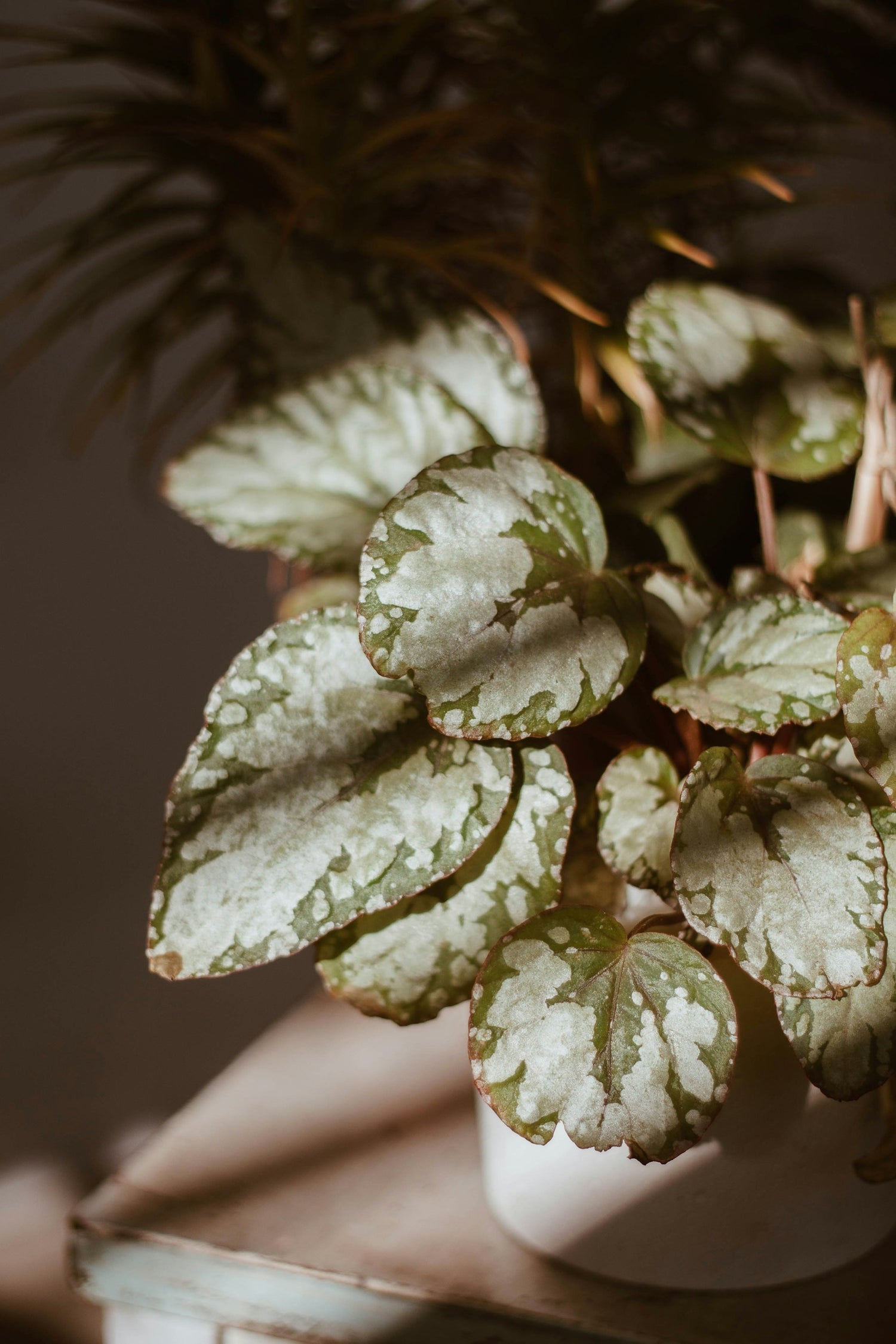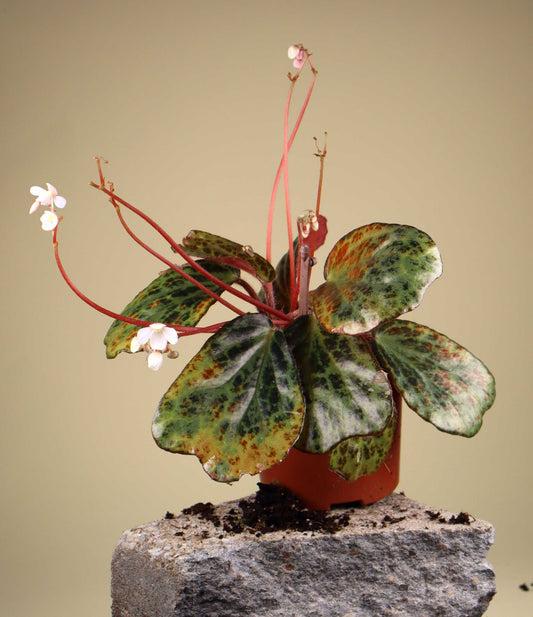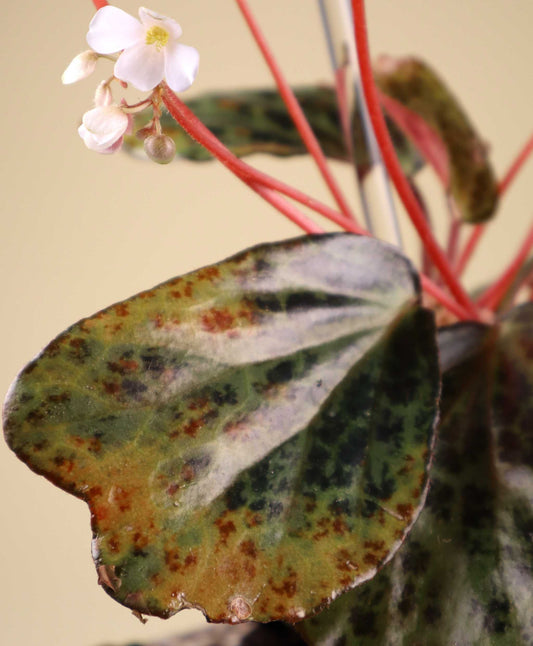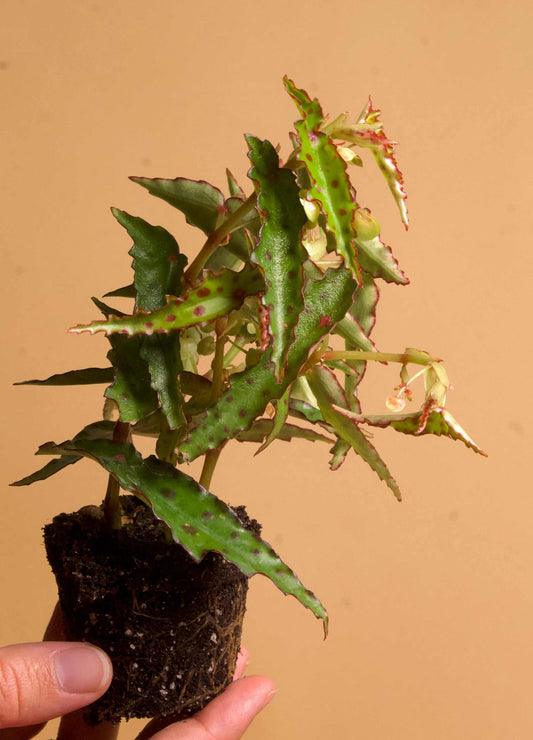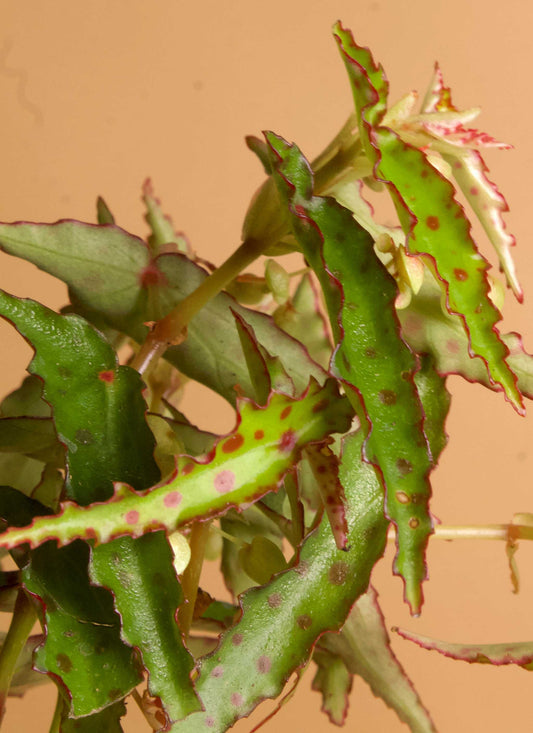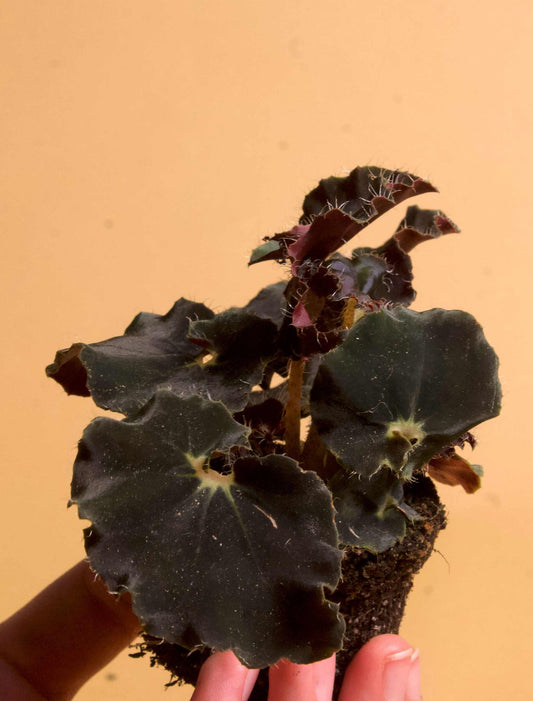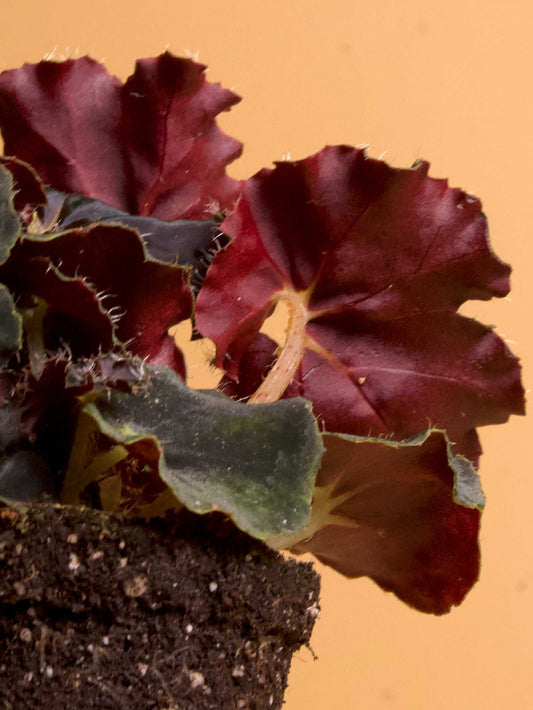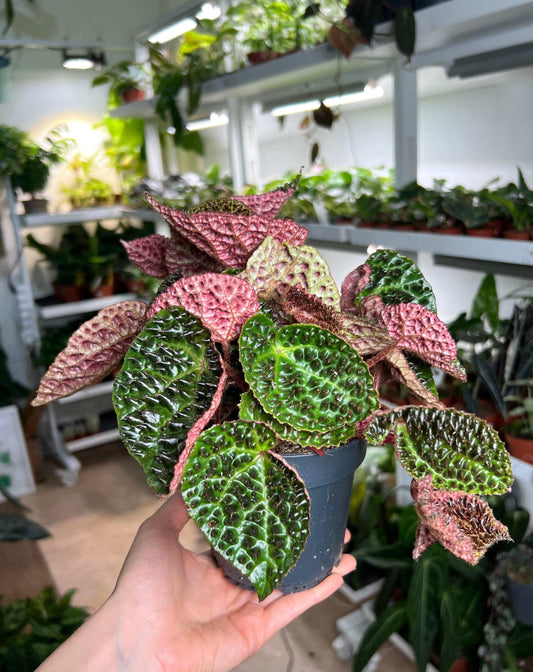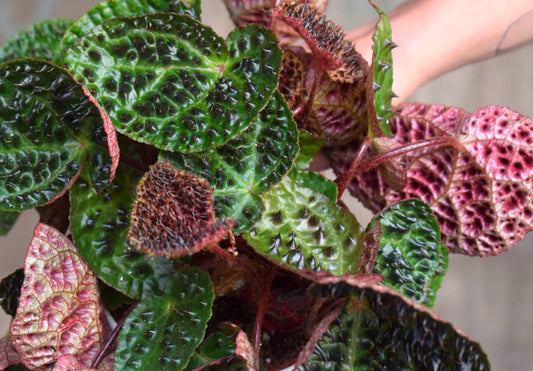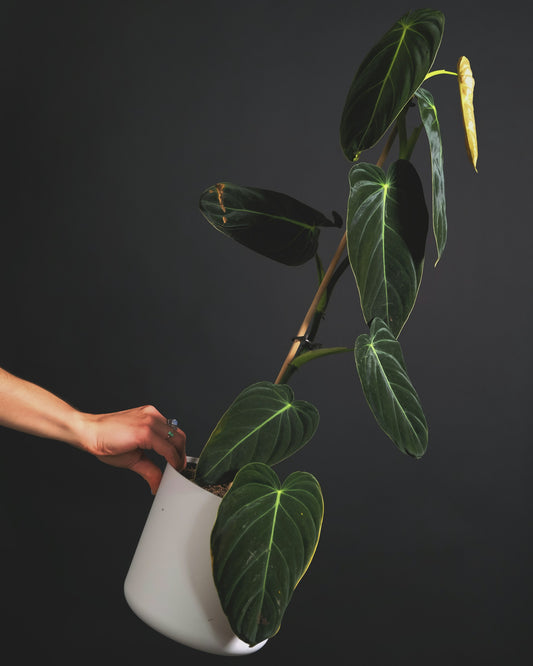Share
All about Begonia: care, varieties and tips to make them thrive
Begonias are fantastic green indoor plants that add color and life to the home or garden. With flowers that last a long time and the ability to thrive in shady environments, they are perfect for windows, balconies and flower beds. Here we go through everything you need to know about the care, varieties and propagation of these popular houseplants such as Rexbegonia, Begonia maculata, Angel Wing, Begonia Grandmother and the old-fashioned begonia known as tuber begonia, which is grown for its flowers

Coral Begonia ' Begonia corallina' , an angel wing with large leaves and red flowers
How to care for a begonia?
Caring for a begonia is easy if you follow a few basic rules:
- Light: In their natural environment, begonias grow under protective trees in tropical forests, so many begonias thrive in partial shade or indirect light. Indoors, a bright place without direct sunlight works well. However, some varieties such as wax begonia and tuber begonia can handle direct sun outdoors.
- Watering: Keep the soil evenly slightly moist, but avoid overwatering, which can cause root rot. Water about once a week, or when the top layer of soil feels dry. Water at the base to protect the leaves from fungal diseases.
- Soil: Use well-drained and nutrient-rich soil with elements of organic material, for example coconut soil mixed with perlite and worm compost. Soil especially suitable for Begonias can be bought from us here.
- Temperature and humidity: Most leaf begonias thrive best at 18-22 degrees and a humidity of at least 50%. Avoid temperatures below 13 degrees.

Flowering begonia
Which soil for Begonia?
When it comes to soil, it is important to use a mixture that is:
- Porous and well-drained to avoid waterlogging and root rot while keeping the soil moist.
- Slightly acidic with a pH between 5.5 and 6.5.
- Rich in organic material , such as coconut fiber or sphagnum moss.
A peat-free soil mix or soil for tropical plants works great. If you are growing begonias in pots indoors, be sure to use a flower pot with drainage holes like these inexpensive plastic pots.
Different types of begonia
There are many types of begonias to choose from. They are broadly divided into leaf begonias and flowering begonias. Here are some of the most popular varieties:
- Rexbegonia (Begonia rex): Known for its patterned leaves in different colors. Perfect as leaf begonia indoors.
- Begonia maculata : Also called Trout Begonia or Spotted Leaf Begonia due to its white dots. A favorite among collectors.
- Wax begonia ( Begonia semperflorens ): A hardy variety for both pots and flower beds.
- Tuber Begonia: Known for its large, colorful flowers and is perfect as an ampel plant.
- Angel Wing (Scarlet Begonia): Has elegant, wing-shaped leaves and small red flowers that bloom for a long time.

Trout begonia also called Begonia maculata with white dots on the pointed leaves
Propagate and plant cuttings
Do you want to propagate leaf begonia or other varieties? It's simple and fun:
- Cut a stem cutting of 8-10 cm and remove the lower leaves.
- Place the cutting in water or directly in moist white moss.
- Keep the moss moist until the roots grow. Rexbegonia cuttings can also be propagated by leaf cuttings by pressing a leaf into moist soil.

Stem cutting of Trout Begonia with root growth in water from the stem.
Problems and solutions
Common problems:
- Yellowing leaves: Often due to overwatering. Let the soil dry out between waterings and make sure the pot has good drainage. In case of nutrient deficiency, add a weak dose of liquid nutrition or our favorite, worm fertilizer.
- Wilting flowers: Check that the begonia is getting the right amount of light and water.
- Low humidity: Increase the humidity with a bowl of water next to the plant. You can also take a saucer and place it under the pot, while raising the pot above by placing the pot on an upside down pot saucer. On the dish below, you can top up with water, which then evaporates and increases the humidity around the leaves of the houseplant. This is especially true if the plant is above an element because the air there often becomes very dry.

Rexbegonia, ' Begonia escargot ', the leaves have a distinct spiral shape reminiscent of a seashell - hence the name.
Brief botanical description of the Begonia genus
The Begonia genus consists of 2,002 species and is one of the largest genera of flowering plants. They grow naturally in humid tropical and subtropical areas such as South and Central America, Africa and southern Asia. The plants can be herbs or low shrubs and grow on the ground or sometimes as epiphytes, meaning they hang on other plants. In cooler climates, some species are grown as indoor plants for their decorative qualities. During the summer, they are sometimes planted outdoors for their colorful flowers.
Begonias are 'monoecious', meaning that both male and female flowers are found on the same plant. The fruit is usually a capsule with lots of small seeds, but some species have berry-like fruits. The leaves are often large, patterned or variegated and are usually asymmetrical, where the right and left sides differ in size.

Begonia ferox is a species from tropical Asia, the leaves have large, pointed and hard "spikes" that protrude from the upper side of the leaves
Summary of Begonia care advice
To get nice flowers and healthy leaves, always use the best begonia potting soil you can afford and place your begonia in an environment that mimics its natural conditions. Tropical plants such as begonias thrive with high humidity and proper nutrition.
With the right care, begonias can become a colorful and long-lived part of your indoor garden! Whether you're growing a decorative red houseplant, indoor green plants, or want to experiment with propagating plants, begonias are a great choice for beginners and experts alike.

